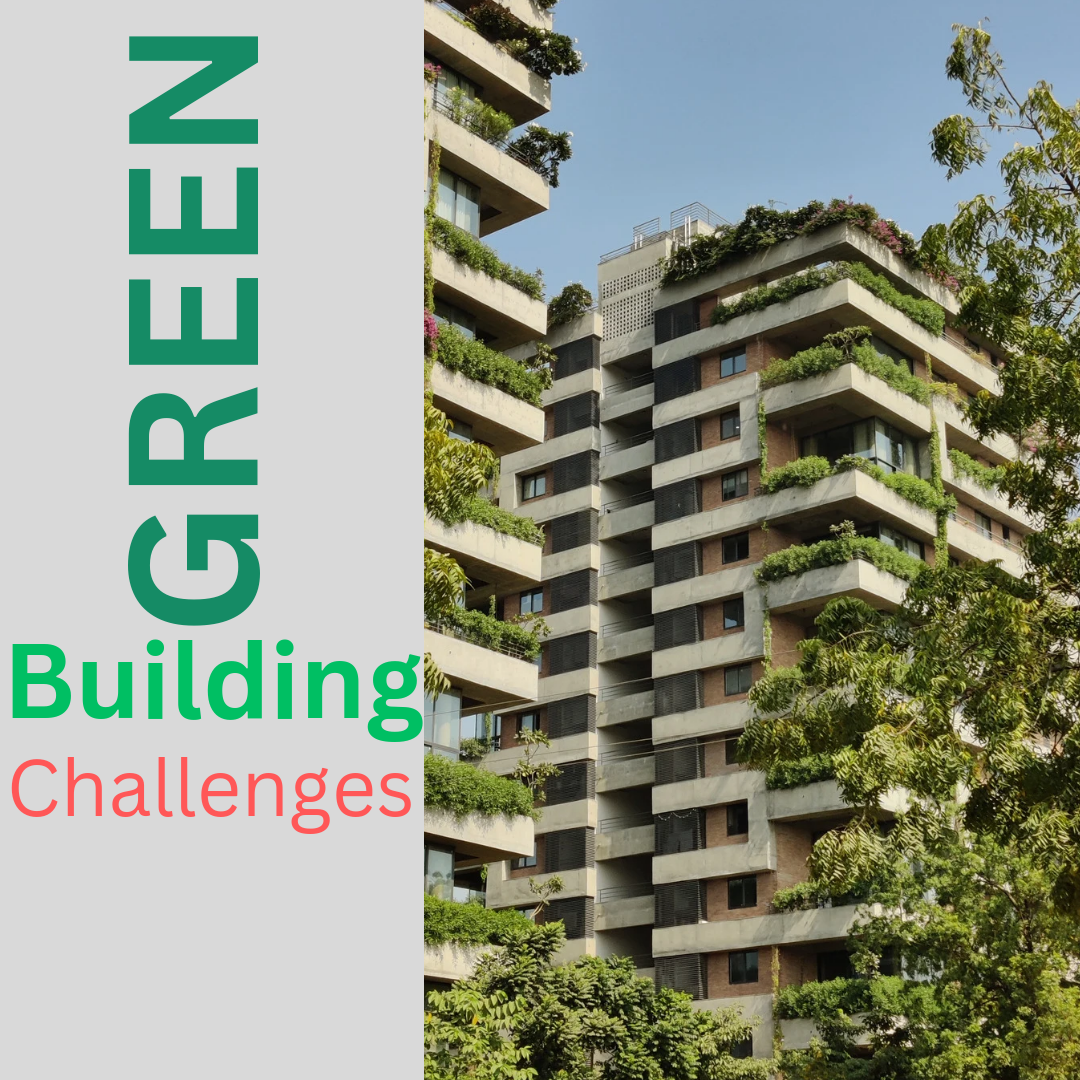Title: Challenges Faced by Builders and Developers in Adopting Green Building Construction: A Comprehensive Analysis
Abstract:
This essay provides an in-depth exploration of the challenges faced by builders and developers in adopting green building construction practices. Despite the numerous environmental and economic benefits associated with green buildings, there are several barriers that hinder their widespread adoption. This essay examines the reasons why builders and developers may be hesitant to embrace green building practices and identifies key challenges related to cost, market demand, technical expertise, regulatory frameworks, and perception. Understanding these challenges is crucial for overcoming barriers and accelerating the transition towards sustainable construction.
Introduction:
Green building construction, also known as sustainable or environmentally friendly construction, involves designing and constructing buildings that minimize their environmental impact and enhance occupant well-being. Despite the growing recognition of the benefits associated with green buildings, including energy efficiency, reduced operational costs, improved indoor air quality, and reduced carbon emissions, there are challenges that hinder their widespread adoption. Builders and developers play a crucial role in driving the shift towards sustainable construction practices. This essay explores the challenges they face and why they may be hesitant to embrace green building construction.
Cost Considerations:
One of the primary challenges builders and developers face in adopting green building practices is the perception that they are cost-prohibitive. The upfront costs associated with integrating sustainable features, such as energy-efficient systems, renewable energy technologies, and eco-friendly materials, can be higher than conventional alternatives. Additionally, green building certification processes and compliance requirements may add additional expenses. Builders and developers often prioritize short-term financial considerations, making it challenging to justify the initial investments required for green building construction.
Market Demand and Perception:
The demand for green buildings is growing, driven by factors such as increased environmental awareness, energy cost savings, and health considerations. However, the perception of market demand for green buildings may vary depending on the region, property type, and target market. Builders and developers may be hesitant to invest in green building construction if they perceive a lack of market demand or are unsure about the willingness of potential buyers or tenants to pay a premium for sustainable features.
Limited Technical Expertise:
Implementing green building practices requires specialized technical knowledge and expertise. Builders and developers may face challenges in finding professionals, such as architects, engineers, and contractors, who possess the necessary skills and experience in green building design and construction. The lack of readily available expertise in sustainable building practices can act as a barrier to adopting green building construction.
Regulatory Frameworks and Incentives:
The regulatory landscape plays a significant role in shaping the adoption of green building practices. In some cases, the absence of clear and consistent regulations, codes, and standards related to green building construction can create uncertainty for builders and developers. Lack of clarity or inconsistent enforcement can lead to confusion and reluctance to invest in sustainable practices. Conversely, well-defined regulations and incentives, such as tax benefits, expedited permitting processes, and density bonuses, can encourage and facilitate the adoption of green building construction.
Return on Investment and Payback Period:
Builders and developers often assess the return on investment (ROI) and payback period for their projects. While green buildings offer long-term cost savings through reduced energy consumption and operational costs, the ROI and payback period may not align with the shorter-term financial expectations of builders and developers. The perceived risk associated with longer payback periods can discourage investment in green building construction.
Supply Chain Challenges:
Green building construction requires access to sustainable and eco-friendly building materials, equipment, and technologies. However, limited availability and higher costs of green building products compared to conventional alternatives can pose challenges. Builders and developers may face difficulties in sourcing sustainable materials and finding suppliers that can meet their project requirements while maintaining cost competitiveness.
Lack of Awareness and Education:
Limited awareness and knowledge about green building practices can be a significant barrier for builders and developers. Without a clear understanding of the benefits, cost savings, and long-term advantages associated with sustainable construction, they may be reluctant to deviate from familiar conventional practices. Education and awareness campaigns that highlight the environmental, economic, and social benefits of green building construction can help overcome this challenge.
Perceived Design Constraints:
Builders and developers may perceive green building practices as limiting their design options or imposing constraints on architectural creativity. The misconception that sustainable design compromises aesthetics or functional requirements can deter adoption. However, innovative and sustainable design principles can integrate green features seamlessly, creating visually appealing and functional buildings.
Conclusion:
Builders and developers face several challenges in adopting green building construction practices. Overcoming these challenges requires a collective effort from various stakeholders, including government bodies, industry associations, professionals, and the public. Efforts to address cost concerns, enhance technical expertise, streamline regulatory frameworks, create market incentives, and raise awareness about the benefits of green buildings are essential. By recognizing and addressing these challenges, builders and developers can contribute to a more sustainable built environment while reaping the long-term economic and environmental benefits of green building construction.

0 Comments